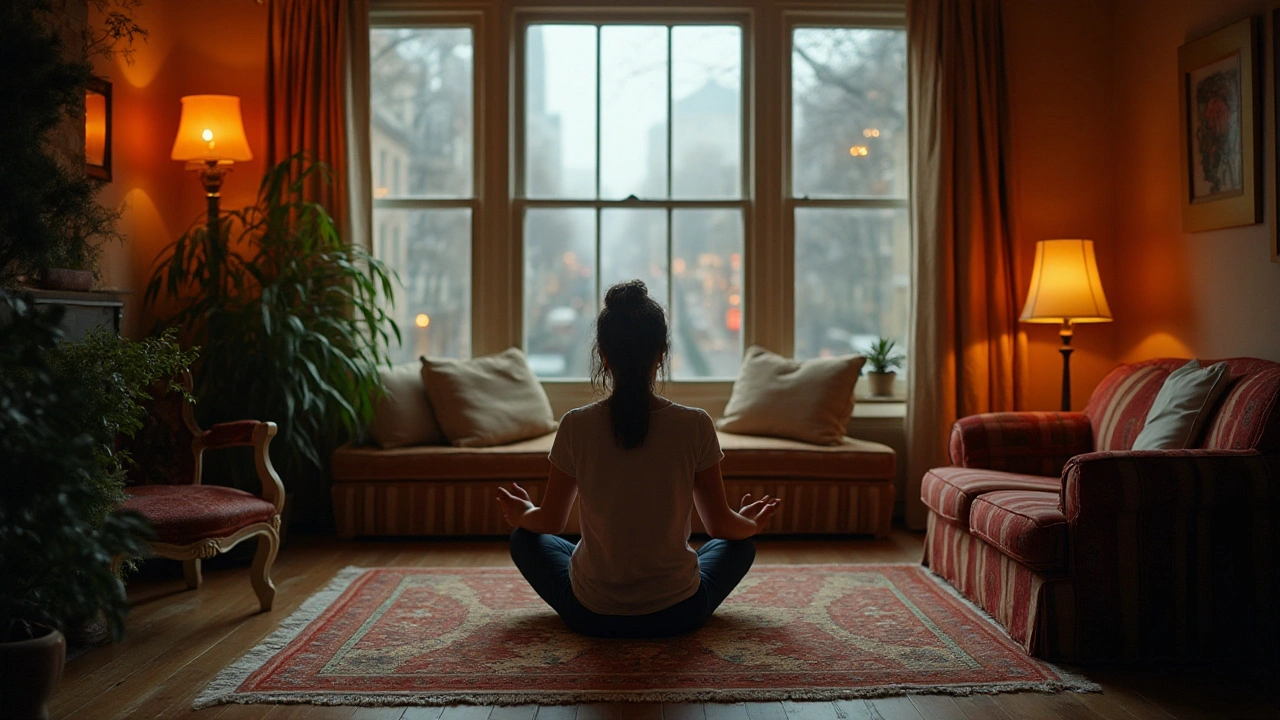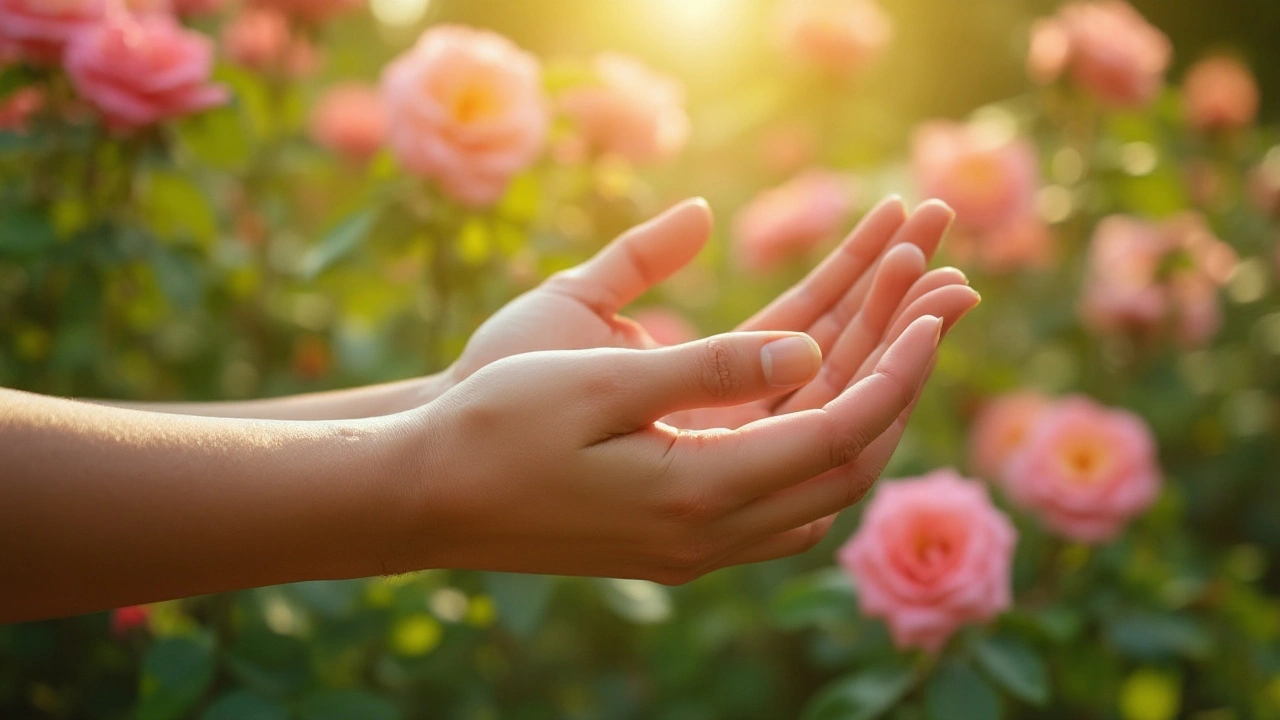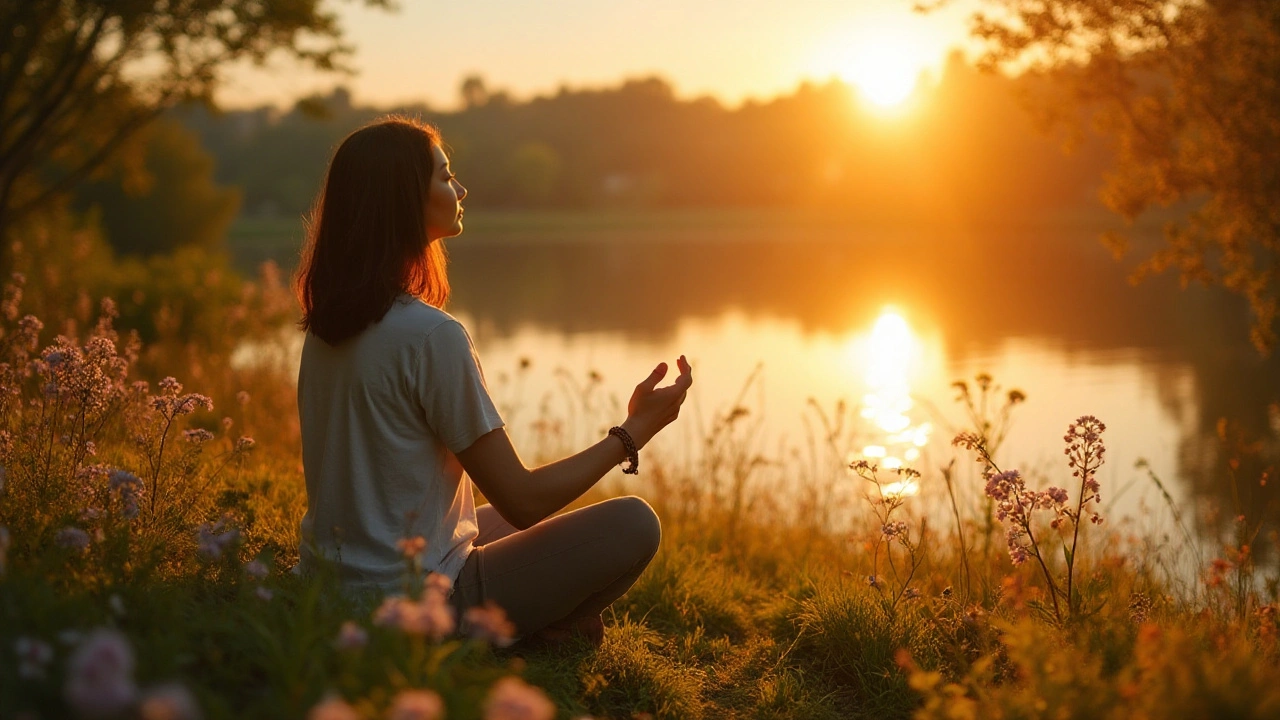Living in a world that demands so much of our time and energy, it’s easy to forget to take a moment for ourselves. Stress can build up quickly, affecting our mental and physical health in numerous ways. But unlocking a stress-free life is possible with the right techniques. Relaxation is not just about getting away; it's about tuning into your body and mind in a way that promotes peace and well-being.
Embracing these techniques can transform your day-to-day life, making stress an exception rather than the rule. From simple breathing exercises that can be done in minutes to more involved practices like meditation and visualization, there's something for everyone. These methods not only soothe the mind but can also improve overall health by lowering blood pressure and enhancing sleep quality. Building a routine around relaxation can create a sanctuary of calm amidst the chaos.
- The Science of Relaxation
- Essential Breathing Techniques
- Mindfulness Meditation Practices
- Progressive Muscle Relaxation
The Science of Relaxation
Humans are biologically programmed to react to stress through the “fight or flight” response, which is an instinctive mechanism that triggers our body to face or flee from threats. This was crucial for survival in ancient times, but in our modern world, the stressors tend to be less about survival and more about psychological and social pressures. Continuous exposure to stress without opportunities for relief can lead to chronic health problems such as cardiovascular diseases, anxiety, depression, and weakened immune function.
Understanding the science of relaxation involves recognizing how the body transitions from a stressed state to a relaxed state. When we engage in activities that promote relaxation, our body activates the parasympathetic nervous system, which works to counteract the stress response by lowering heart rate, reducing blood pressure, and encouraging slower, deeper breathing. This state is sometimes referred to as the “rest and digest” mode. Feeling calm and stable isn’t just an emotional state; it is a physiological phenomenon that researchers have studied extensively.
According to Dr. Herbert Benson, who has conducted significant research at Harvard Medical School, invoking what he termed the “relaxation response” could lead to measurable changes in our physiology and overall stress levels.
“The relaxation response is a physical state of deep rest that changes the physical and emotional responses to stress,” Benson explained, indicating how crucial it is to practice intentional relaxation.
The Biological Effects of Stress Relief
When stress levels decrease, several biological processes are positively impacted. Stress hormones such as cortisol and adrenaline drop, providing relief to your heart and circulatory systems. Oxytocin, a hormone associated with feelings of well-being, may increase, fostering a sense of happiness and reducing anxiety. Apparently, nature crafted us in a way that rewards our efforts towards tranquility. Incorporating regular relaxation practices allows these chemical changes to become a part of life, promoting both immediate and lasting benefits for health and happiness.Some researchers have even begun exploring the effects of relaxation on gene expression, with early studies indicating that favorable changes in gene activity may result from regular meditational practices. The science is showing us that the way we live our lives influences how our genes express themselves, underscoring the power our daily habits hold in shaping our health.
Tranquility, therefore, is not just an abstract, elusive goal. It’s grounded in science, and there are tangible, measurable ways to achieve it. By understanding and leveraging the mechanics of the relaxation response, we can transform stress-filled, chaotic lives into ones of serenity and balance. It's exciting to think that our bodies are designed not only to cope with stress but to flourish through relaxation and rest.

Essential Breathing Techniques
Breathing is something we do without thinking, yet it holds remarkable power to influence our state of mind and body. Practicing breathing techniques is like having a secret weapon against stress. They are easy to learn, require no special equipment, and you can do them anywhere. Focusing on the breath provides a moment to pause and collect oneself, offering a pathway to a stress-free state amidst life’s chaos. One powerful technique is diaphragmatic breathing, also known as belly breathing. This involves inhaling deeply through the nose so the diaphragm expands and letting the abdomen rise, then exhaling leisurely. This relaxes the nervous system and lowers the heartbeat, making it a favored method among those striving to manage their stress.
Another effective method is the 4-7-8 technique. Developed by Dr. Andrew Weil, this method has been used to help people manage anxiety and fall asleep more easily. To perform this technique, inhale quietly through the nose for a count of four, hold the breath for a count of seven, and exhale completely through the mouth for a count of eight. Practicing this cycle four times in one sitting can send a signal to the brain to relax and let go. Studies have shown that focused breathing can reduce cortisol levels, the body's primary stress hormone, thus reinforcing its role in maintaining our mental health.
Research into the benefits of breathing exercises has yielded encouraging results. A study published in the Journal of Clinical Psychology revealed that subjects who practiced deep breathing for just a few minutes a day significantly improved their mood and emotional regulation. This indicates the profound effect relaxation techniques like breathing can have on mental health when practiced regularly. Philosopher and educational reformer John Dewey once said,
"Harmony is achieved, not when a conflict is resolved, but when it has been transformed."Breathing techniques can indeed transform the way we experience stress.
For those new to relaxation techniques, it might be helpful to follow specific instructions until these practices become second nature. Start by sitting or lying down comfortably, with one hand on the belly and the other on the chest. As you breathe, notice which hand rises first. The goal is to use your diaphragm more effectively, so the hand on your belly rises before the hand on your chest. Making a daily habit of such exercises can reap significant benefits, creating a lasting change in how you handle both minor and major stressors.
Incorporating breathing techniques into your daily routine can lead to a host of benefits, from reduced anxiety and stress to improved sleep and concentration. These exercises remind us to pay attention to our body's needs and the rhythm of our breath. Whether you take a few minutes at your desk or set aside longer periods at home, these techniques offer a simple yet powerful way to unlock a stress-free life. In doing so, you not only cultivate a personal sanctuary but also empower yourself with the knowledge and skills to remain calm and centered in the face of life's inevitable challenges.

Mindfulness Meditation Practices
Mindfulness meditation has gained immense popularity in recent years as a gateway to achieving a stress-free and calm state of mind. It is a practice where individuals focus on the present moment, allowing their thoughts to pass without judgment. This ancient practice has roots in Buddhist philosophy but is accessible to anyone willing to dedicate some time to learning it. The beauty of mindfulness is that it can be done almost anywhere—from a crowded commuter train to your cozy corner at home. Mindfulness involves a lot more than simply closing your eyes. It promotes increased awareness of bodily sensations, sounds, smells, sights, and feelings.
One well-known method is to start by focusing on your breath, gently guiding your attention back whenever your mind begins to wander. Over time, many practitioners report feeling a greater sense of calm and clarity. A well-cited study by Harvard University found that brain structures related to learning, memory, and emotion regulation actually changed after eight weeks of consistent mindfulness meditation, underscoring its potential benefits. Mindfulness meditation sometimes means observing bodily sensations, such as the texture of a blanket or the feeling of air passing in and out, which can deepen awareness and encourage relaxation.
"Mindfulness is not difficult. We just need to remember to do it." – Sharon Salzberg, a renowned meditation teacher.
Different approaches to mindfulness are designed to either solidify concentration or create an expansive awareness. Methods like the body scan can help you tune in to the sensations and needs of your body, making it an excellent tool for physical relaxation. Meanwhile, loving-kindness meditation involves focusing on the feelings of love and kindness toward oneself and others, potentially increasing empathy and social connection. A growing body of research supports the efficacy of these practices. The American Psychological Association notes that mindfulness can improve overall psychological health and empower individuals to develop skills such as concentration and self-awareness.
Steps to Establish a Mindfulness Meditation Routine
- Begin by setting aside 5-10 minutes each day in a quiet space free from distractions.
- Sit comfortably, either on the floor, on a cushion, or in a chair.
- Close your eyes gently or keep them open with a soft focus, depending on what feels best for you.
- Take a few deep breaths and then allow your breath to return to its natural rhythm.
- Focus your attention on the sensation of your breath entering and leaving your body. Guide your attention back when you notice your thoughts drifting.
- Optionally, you can focus on an object, a sound, or even a sensation in the body.
- Gradually increase the time dedicated to your practice as you become more comfortable and involved.
Incorporating these relaxation techniques can be transformative, potentially integrating a sense of peace into daily life that flows into activities, relationships, and work environments. The practice of mindfulness can be a powerful tool in reducing stress and bringing balance, enabling a more tranquil and harmonious life experience.

Progressive Muscle Relaxation
Progressive Muscle Relaxation, often referred to as PMR, is a well-crafted technique used to release tension in your body. In a world where stress-free living may seem elusive, PMR offers a feasible path to tranquility. This technique involves tensing and then slowly relaxing each muscle group, allowing a wave of relaxation to flow through your body. Originating from Dr. Edmund Jacobson in the 1920s, PMR stands as a testament to the belief that mental calmness follows physical relaxation. By focusing on each muscle group, you become more aware of tension build-up and learn to let go of the stress bottled up inside. This deliberate engagement and release of tension aim to not only calm the body but also settle the mind.
Transforming this practice into a daily routine can be incredibly rewarding. As simple as it sounds, it requires a quiet space and a commitment to self-care. Find a comfortable spot, like a cozy chair or a supportive mattress, to ensure that you’re completely at ease while practicing. Begin with your feet, tensing the muscles as tight as you can for a few seconds before releasing the tension fully. Work your way up through the body, moving to the calves, thighs, abdomen, and so on, ending at the face. This method, not only eases physical stress but some also find it helps with better sleep. Stress relief becomes attainable as each muscle group releases the tension.
Studies have shown that PMR can significantly reduce symptoms of anxiety and depression, marking it as an effective tool for improving mental health. An interesting fact is that PMR can also enhance focus and productivity, providing a clear mind to tackle challenges with more vigor. In the words of Dr. Herbert Benson, "The physical act of relieving tension can trigger a mental sigh of relief, bringing a much-needed break from the chaos." He emphasized the body-mind connection profound in stress management. Individuals practicing PMR report better sleep quality, decreased muscle stiffness, and an overall sense of well-being.
The benefits of PMR extend to all age groups. Children, adults, and seniors alike can adopt this technique with ease. Imagine this like a gentle reset button for the body and mind. What's refreshing about PMR is that it requires no special equipment; all it demands is your time and attention. People struggling with stress relief can find solace in these simple practices. Moreover, certain apps and guided videos provide a guide to ensure that you’re on the right track. Incorporating it into your bedtime routine might do wonders for your sleep. So imagine ending the day with not just a relaxed body, but also a peaceful mind. Truly, PMR taps into both powerful and subtle stress relief techniques unrivaled in its simplicity and effectiveness.
